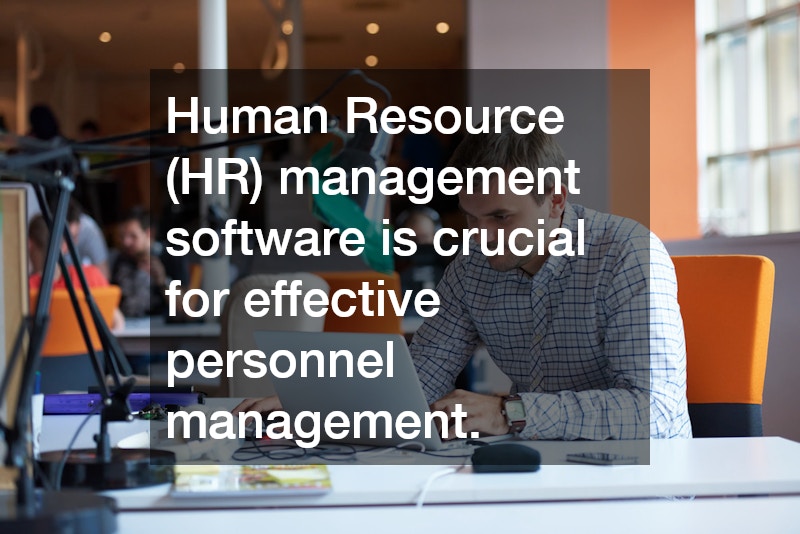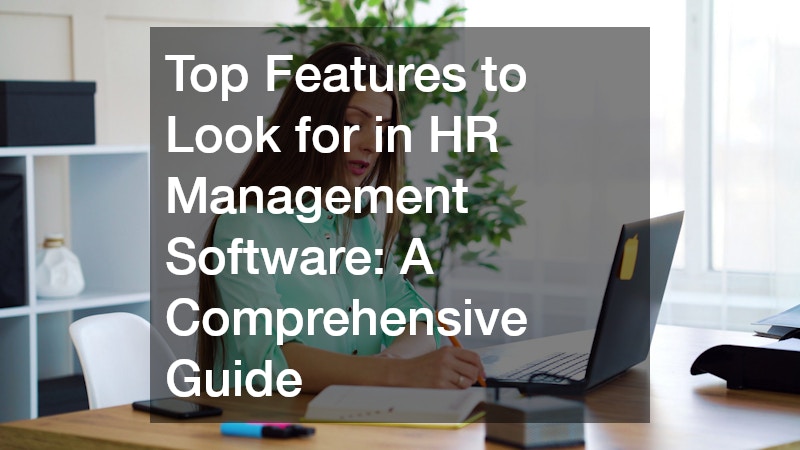Top Features to Look for in HR Management Software: A Comprehensive Guide
In today’s fast-paced business environment, Human Resource (HR) management software is crucial for effective personnel management. This article explores the top features you should consider when choosing the best HR software to meet your organization’s needs.
What Core Functionalities Should HR Management Software Offer?
Integration with Existing Systems
In the digital transformation era, the ability to integrate HR management software with existing systems is non-negotiable. Seamlessly connecting different software systems within an organization ensures that data flows effortlessly between departments, thereby reducing the risk of errors and improving overall efficiency.
For instance, integrating HR software with accounting systems can streamline processes such as payroll, expense reporting, and budgeting.
Employee Self-Service Portals
Employee self-service portals are a game-changer for modern HR management, providing employees with the autonomy to manage their personal and professional data. These portals typically allow employees to update personal information, access pay stubs, submit leave requests, and review benefits information on their schedules, thus reducing administrative workloads for HR staff.
By giving employees more control over their data, self-service portals enhance engagement and satisfaction among all stakeholders. For instance, when employees can directly update their contact information or request time off without consulting HR, they save time and reduce bureaucratic friction. This autonomy aligns with the broader trend towards more employee-centric workplaces, where flexibility and responsiveness are crucial.
Automated Payroll Processing
One of the most significant benefits of HR management software is the automation of payroll processing, a traditionally tedious and time-consuming task. Automated payroll systems reduce human error, ensure compliance with tax regulations, and offer employees a reliable and consistent pay experience, all while saving organizations time and resources.
Automation provides the ability to manage complex payroll calculations, including overtime, deductions, and benefits. By streamlining these processes, HR departments can ensure timely payments to employees, contributing to workplace satisfaction and trust.
Comprehensive Reporting and Analytics
Comprehensive reporting and analytics capabilities in HR management software give companies a competitive edge by unlocking valuable insights from employee data. Robust analytics tools enable HR professionals to go beyond standard metrics, uncovering patterns and trends that inform strategic decision-making in areas such as recruitment, retention, and workforce planning.
Through detailed reports and dashboards, HR departments can monitor key performance indicators (KPIs) in real-time. This data-driven approach ensures that organizations remain agile, adapting quickly to changes and making informed decisions that drive growth. As a case in point, predictive analytics can help identify potential turnover risks, enabling HR to take proactive measures.
What Are the Essential Features for Performance Management in HR Software?
Performance Appraisal Tools
Performance appraisal tools integrated into HR management software play a pivotal role in evaluating and enhancing employee performance. These tools offer a structured framework for setting expectations, evaluating achievements, and providing feedback, thereby promoting a culture of transparency and continuous improvement in the workplace.
A notable advantage of digital appraisal tools is their ability to streamline the appraisal process, making it more objective, consistent, and fair. By standardizing evaluation criteria and incorporating 360-degree feedback, these tools ensure that performance reviews are comprehensive and unbiased. Additionally, automated notifications and reminders can ensure that appraisals are conducted on schedule.
Goal Setting and Tracking
Effective HR management software facilitates goal setting and tracking, providing a framework for driving productivity and accountability across the organization. By empowering employees to set, revise, and track individual and team goals, organizations can ensure alignment between day-to-day activities and overarching business objectives.
Goal-setting modules within HR platforms promote transparency, enabling employees and managers to collaborate on defining clear, measurable objectives. Utilizing SMART (Specific, Measurable, Achievable, Relevant, Time-bound) criteria, these tools guide users in developing actionable plans. Such clarity enhances focus, encourages autonomy, and enables real-time progress monitoring.
Feedback and Development Planning
Feedback and development planning are critical components of performance management, and HR software enhances these processes by providing structured, consistent, and actionable mechanisms for delivering feedback. This capacity empowers organizations to cultivate a growth-minded culture, motivating employees through recognition and developmental support.
HR software facilitates the integration of real-time feedback channels, enabling timely recognition of accomplishments and prompt identification of areas for improvement. By providing a platform for continuous feedback, it supports the evolution from annual performance reviews to an ongoing, dialogue-driven approach that prioritizes growth.
How Does HR Software Enhance Employee Engagement and Satisfaction?
Employee Surveys and Feedback Collection
Employee engagement is vital for organizational success, and HR management software plays a crucial role in enhancing this aspect by leveraging employee surveys and feedback collection tools. These tools offer a mechanism for employees to voice their opinions and concerns, fostering a culture of openness, inclusion, and continuous improvement.
Implementing regular surveys through HR software allows organizations to gather invaluable insights into employee sentiment and engagement levels. Analyzing this data enables HR professionals to identify trends and root causes of dissatisfaction, understand employee needs, and develop targeted strategies to address challenges.
Communication and Collaboration Tools
Effective communication is essential for employee engagement, and HR management software offers various tools to facilitate seamless collaboration. By integrating communication features such as chat platforms, discussion forums, and collaborative workspaces, HR software cultivates a more connected and agile workforce.
Real-time communication tools empower employees to interact easily with colleagues, share ideas, and swiftly address issues, leading to enhanced productivity and collaborative innovation. Such tools provide immediate access to colleagues and resources, breaking down silos and promoting cross-functional teamwork.
Conclusion
Choosing the right HR management software can significantly enhance the functionality and efficiency of your HR department. Understanding the essential features and capabilities of modern HR software ensures that you make an informed decision that aligns with your company’s goals and compliance requirements. By assessing core functionalities, performance management tools, and engagement features, organizations can select solutions that drive strategic success and foster a positive workplace culture.

